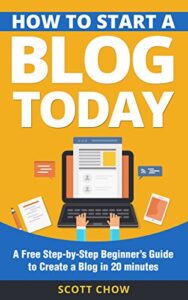Now loading...
Step-by-Step Guide to Starting Your Blog
Step 1: Choose Your Blogging Niche
Step 2: Select a Blogging Platform
Selecting the right blogging platform is really important for your blog’s success. WordPress, Blogger, and Wix are popular options. Among them, WordPress.org stands out as the most flexible and widely used platform, offering a vast range of customization options and plugins to enhance your blog’s functionality.
Step 3: Register a Domain Name
Your domain name is your blog’s online address, so choose it wisely. Ideally, it should show the relevance with your niche and memorable. Use domain registration services like Hostinger or Namecheap to check the availability of your desired domain name and secure it.
Step 4: Choose a Hosting Provider
To make your blog accessible on the internet, you need a hosting provider. Hosting companies like Hostinger or Hostgator offer reliable and affordable hosting plans. Evaluate their features, customer support, and pricing to choose the best fit for your needs.
Step 5: Set Up WordPress
If you’ve chosen WordPress as your platform, install it on your hosting account. Most hosting providers offer one-click WordPress installation, simplifying the process significantly.
Step 6: Customize Your Blog’s Design
Your blog’s design plays a significant role in attracting and engaging your audience. Explore the trending themes available in the WordPress repository or third-party theme marketplaces like ThemeForest or drag and drop theme builder i.e. Divi. Choose a theme that aligns with your brand and offers the desired layout and functionality.
Step 7: Create Essential Pages
Set up essential pages for your blog, including an About page to introduce yourself and your blog’s purpose, a Contact page for visitors to reach out to you, and a Privacy Policy page to comply with legal requirements.
Step 8: Install Essential Plugins
Plugins add functionality to your blog. Install essential plugins such as Rankmath SEO to optimize your blog for search engines, Akismet to protect against spam comments, and a caching plugin like WP Super Cache to improve your site’s speed and performance.
Step 9: Develop a Content Strategy
Plan your blog’s content strategy. Outline the topics you want to cover, create an editorial calendar, and determine how frequently you’ll publish new posts. Consistency is a seed to build up a loyal readership.
Step 10: Start Creating Compelling Content
With your content strategy in place, start creating blog posts that resonate with your audience. Aim for quality, value-driven content that addresses your readers’ needs and interests. Incorporate relevant keywords to improve your search engine rankings and attract organic traffic. You are advice to review before publishing if your content is plagiarism free.
Step 11: Add Visual Appeal
Enhance your blog posts with eye-catching visuals. Use high-quality images, infographics, and videos to complement your content and make it more engaging.
Step 12: Promote Your Blog
Promotion is vital to attract readers to your blog. Share your blog posts on social media platforms, join relevant online communities, and participate in discussions related to your niche. Networking with other bloggers and guest posting on established blogs can also boost your visibility.
Step 13: Engage with Your Audience
Engagement is a working key to build up the community for your blog. Respond to comments, emails, and social media messages promptly. Encourage discussions and create a welcoming environment for your readers.
Step 14: Monitor and Analyze Performance
Use analytics tools like Google Analytics to track your blog’s performance. Analyze data on traffic, popular posts, and audience behavior to understand what resonates with your readers. You can use these insights to optimize your content strategy and grow your blog.
Step 15: Monetize Your Blog (Optional)
If you wish to monetize your blog, explore various options like affiliate marketing, sponsored content, display advertising, and selling digital products or services. Choose methods that align with your blog’s niche and values.
Step 16: Stay Consistent and Evolve
Consistency is a seed for your blog’s success. Stick to your content schedule and keep engaging with your audience. Be open to evolution and adapt your blog as you learn from your experiences and audience feedback.
Last Word
Starting a blog is an exciting journey that offers opportunities for self-expression, connection, and even financial rewards. By following this step-by-step guide to starting your blog, you’ll be well on your way to launching a successful blog. Remember to stay true to your passions, create valuable content, and engage with your audience. With dedication and perseverance, your blog can become a meaningful platform that enriches the lives of your readers and fulfills your aspirations as a blogger. So, take that leap and let your words shape the online world with this guide to Starting Your Blog!
Now loading...




